...from the area's political and bureaucratic issues.
It's November and, despite the weather remaining relatively mild, time to get crackin' on winter protection for the palms.
Palms?
In the Okanagan? Winter?
Yup...palm trees.
It's just a matter of knowing how to keep the fronds, and roots of course, from freezing.
Plus not giving in to the provincial government's ban on incandescent lights...C-7 Christmas lights, which I've kept! They emit warmth versus LED lights, which do not.
The most important part is the T-3 Thermocube which turns lights on when it registers temp dropping to 35F...and lights are turned off by the thermocube when it registers 45F.
"Teepees" made of either steel fence posts--or $1 broom handles from the dollar store--covered with 6 ml vapor barrier, taped closed with Tuck Tape will hold cooler temperatures at bay for a while. But the second cover is old solar pool blankets, stretched loosely over the vapor barrier to provide an insulating air space, and held in place with more tape and heavy rocks.
Pictures tell it better:
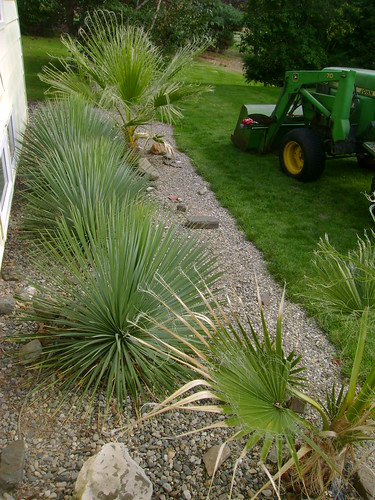 |
| Ah...palm trees...they love the Okanagan's hot dry summers |
 |
| Not all the palms are Washingtonia. One Brahea armata, and one Chamaeroops humilis var. cerifera is also protected. |
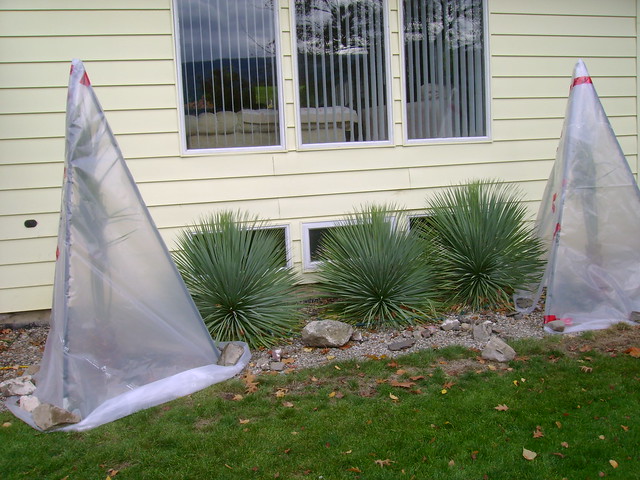 | ||
| The 3 plants between the teepees are Yucca Rostrata "sapphire skies". They'll receive teepee framed plastic protection as well, but no heat. |
 |
| Yuccas simply need their crowns to remain dry through winter, and plastic will provide that. |
Then there's this brute...a 10-foot Trachycarpus fortunei (Windmill Palm)...which receives a styrofoam-insulated plywood palm hut, its interior heated with a space heater also controlled by a T-3 thermocube.
 | ||
| Trachycarpus fortunei, a little crooked because we tried to pull it straight. Its plywood palm hut panels will be bolted to the railway tie base shown. |
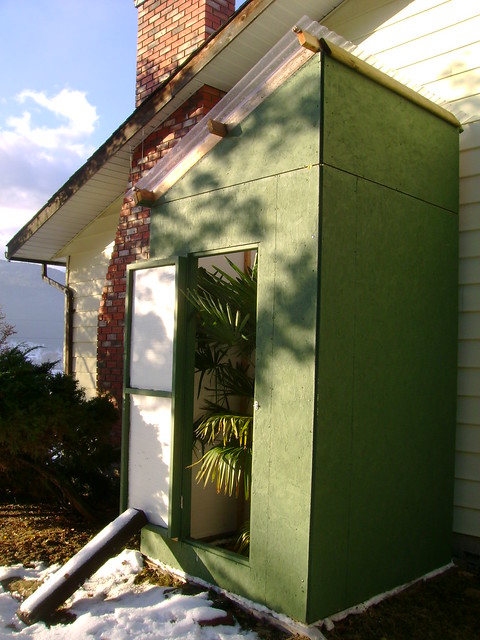 | ||
| The palm hut during a later winter day in another year. |
Have you ever seen flowers on a palm tree?
Like all plants, the Trachycarpus fortunei produces flowers, first inflorescences which can lead to seed production.
My Trachycarpus has bloomed for several years, starting like this:
which leads to this:
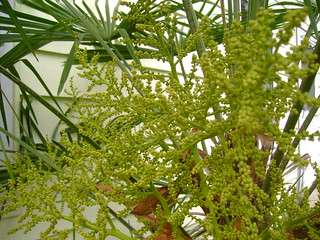 |
| The palm tree is a male and although it produces pollen, with no blooming female trachycarpus, there'll be no viable seeds produced. Occasionally a hermaphrodite palm produces pollen and seed, but that is relatively rare. |
 |
| This old Canary Island Date Palm has lived in successive containers, eventually leading to a garbage can. Its next home is shown near the patio at Highlands Golf clubhouse. |
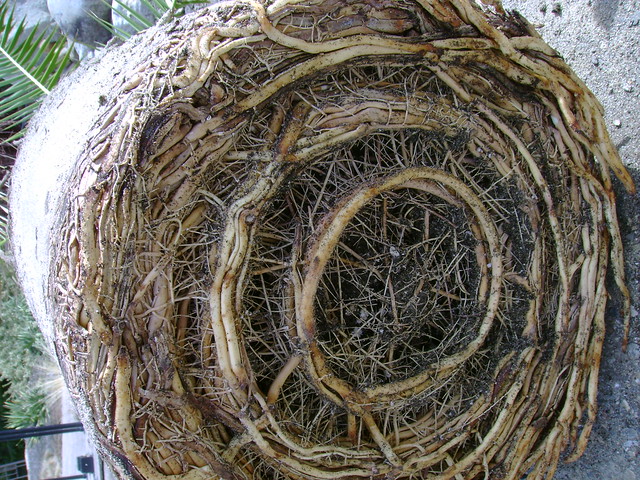 | ||
| Rootbound...ya think? |
Oh...and there's a stunning 40-year old Jade Tree that winters in the clubhouse.
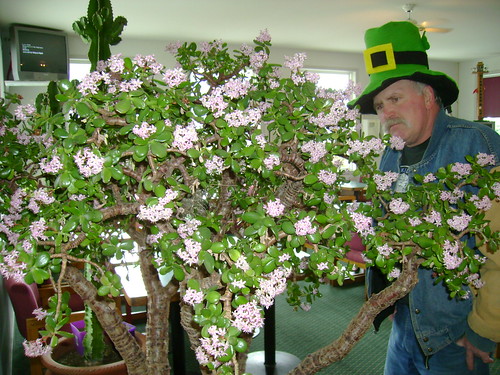 |
| The St. Patrick's Day admirer of the Jade Tree was carpenter Hughie. |
and the "Dinosaur" plant, Wollemia nobilis, whose parentage goes back millions of years. The last population was discovered in the Blue Mountains region of Australia:
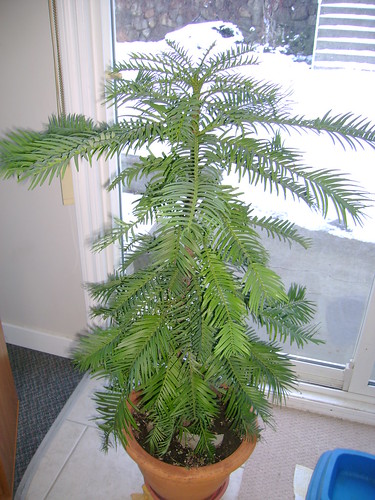 |
| Wollemia nobilis, rediscovered in 1994 |
And one of my favourites rounds out the collection, the Bird of Paradise:
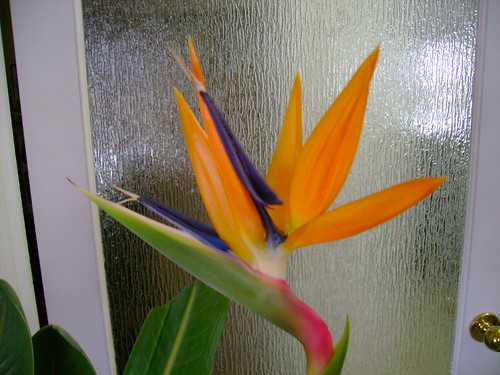 |
| Distinctive bloom of Strelitzia, the Bird of Paradise |
| "Diversion? More like Plant OCD," grins Kia. |

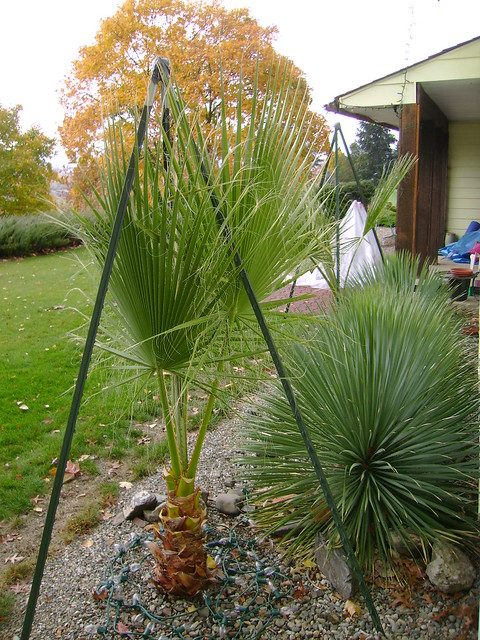

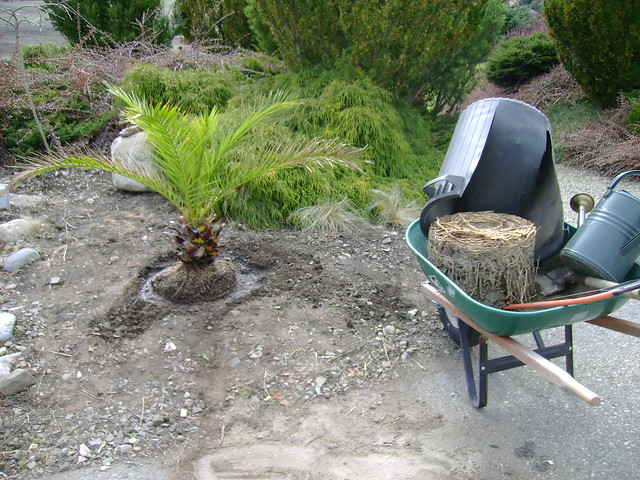





No comments:
Post a Comment
Share YOUR thoughts here...